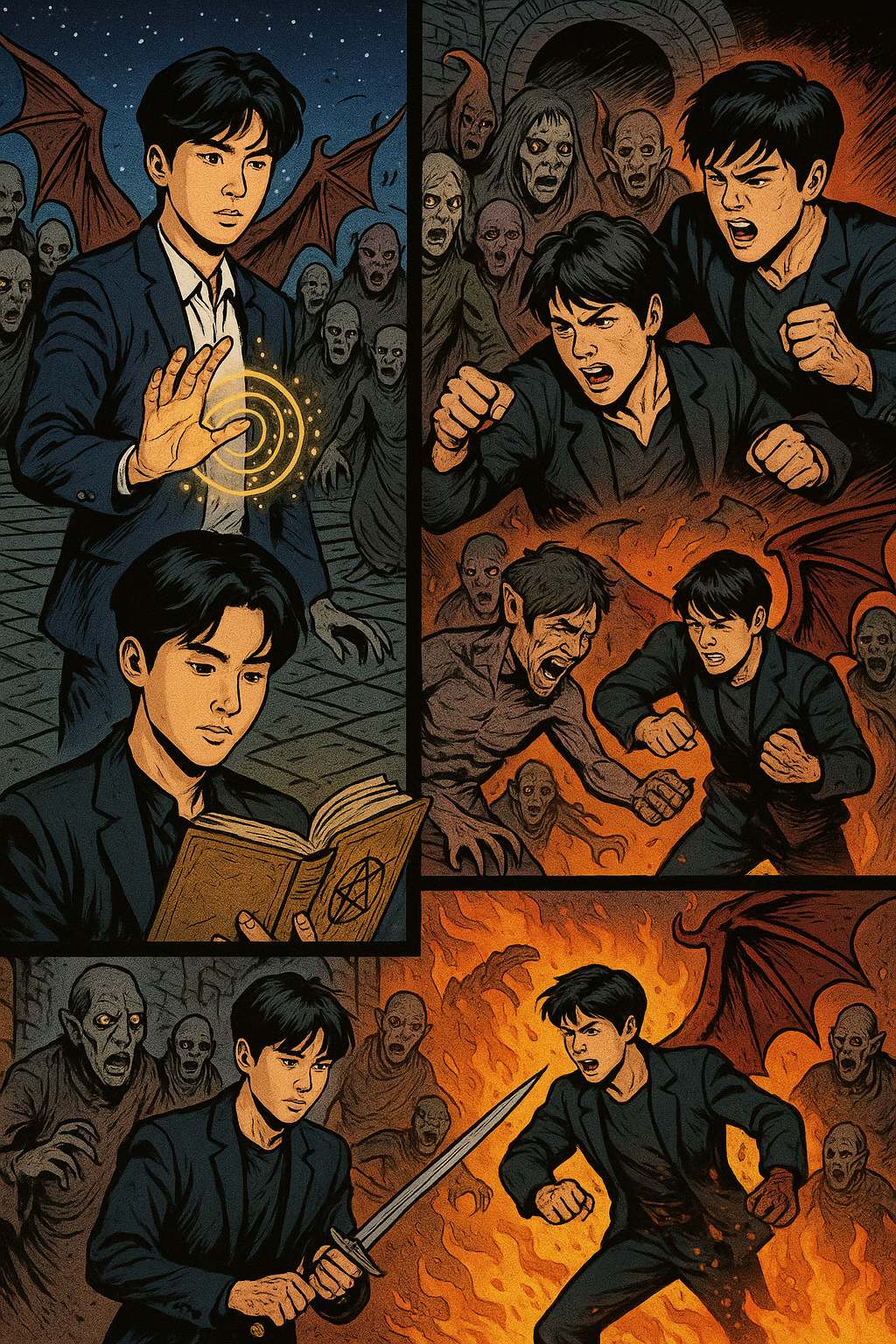Occult Analysis of KPOP Demon Hunters
An occult analysis of K-pop “demon hunter” themes, examining symbolism, esoteric references, and potential psychological and cultural undercurrents in these concepts:
Overview
In recent years, numerous K-pop acts (especially male idol groups) have incorporated themes of demon hunting, exorcism, and supernatural warfare into their aesthetics. Examples include groups like ATEEZ, TXT, VIXX, Dreamcatcher, and BTS (in select MVs like “Blood Sweat & Tears”). These presentations go beyond simple fantasy, often including ritualistic motifs, alchemical symbols, and dualistic morality — all of which warrant deeper occult interpretation.
Key Occult Elements Identified
1. Duality and the Shadow
- Jungian psychology, foundational to modern occult thought, speaks of integrating the “shadow self” — the repressed aspects of the psyche.
- K-pop “demon hunters” often fight mirror versions of themselves, or corrupted alter-egos.
- Example: TXT’s MV “0X1=LOVESONG” and “Anti-Romantic” portray inner conflict as supernatural warfare.
- Interpretation: This can be seen as an initiatory trial — a rite of passage requiring the confrontation of one’s own demons, in the alchemical sense.
2. Ritual and Magic Circle Motifs
- Several MVs depict summoning circles, ritual combat, or sigil-like choreography (especially with synchronized movement forming geometric patterns).
- Example: Dreamcatcher’s “Odd Eye” and “BOCA” use esoteric backdrops resembling hermetic seals or Goetic symbols.
- Interpretation: These may allude to the Solomonic tradition of binding and commanding spirits — a veiled reference to mind control, ego suppression, or possession themes.
3. Fallen Angel and Nephilim Archetypes
- Many idols are portrayed with black wings, halos, or as beings “cast down.”
- This mirrors the myth of the Watchers (Nephilim) in the Book of Enoch — divine beings who fell through lust or rebellion.
- Example: BTS “Blood Sweat & Tears” references Hermann Hesse’s Demian, which centers on Gnostic ideas of embracing both good and evil.
- Interpretation: These visuals suggest a Luciferian journey of rebellion against imposed moral dichotomies, embracing gnosis through transgression.
4. Kabbalistic and Gnostic Imagery
- Stairs, mirrors, trees, and cubes recur — all symbols in Kabbalah (Tree of Life) and Gnosticism.
- The “demon” often represents archons — Gnostic barriers that trap the soul in ignorance.
- Example: ATEEZ’s “HALA HALA” and “Answer” depict trials across dimensions, perhaps referencing sephirothic ascension or Qliphothic descent.
- Interpretation: The idol becomes a metaphysical warrior, either ascending through light (Kether) or descending into shadow (Thaumiel) to gain enlightenment.
5. The Use of Blood and Sacrifice
- Blood is a core motif: used in MVs to represent power, temptation, and contract.
- Example: Enhypen’s “Drunk-Dazed” and “Fever” show blood-like wine, fang motifs, and coven settings.
- Interpretation: Blood here symbolizes initiation by ordeal, sacrifice, or even binding pacts — perhaps referencing Faustian bargains with the industry or the egregore of the fan-idol relationship.
Deeper Symbolism: The Idol as Magus
In esoteric traditions, the magus (or initiate) undergoes transformation by mastering forces of darkness and light. The “demon hunter” idol figure mimics this transformation:
- Pre-initiation (Innocence): Idol begins naive, pure — dressed in white or in school uniforms.
- Temptation/Corruption: Introduced to “forbidden knowledge” or desire (love, fame, trauma).
- Possession or Fall: Idol may become possessed, develop dual identities, or enter the underworld.
- Exorcism/Return: Emerges with power over darkness — the hunter becomes part-demon, a master of the very forces once feared.
This is a classic alchemical transmutation, wrapped in stylized pop choreography and musical theater.
Cultural-Specific Underlayers
- Korea’s shamanic heritage (Muism) plays a subtle role. Shamans in Korea often “fall ill” and recover through spirit possession, becoming mediators between worlds.
- K-pop’s “demon hunter” theme mirrors this shamanic crisis, with idols enacting psychic death and rebirth — not unlike voluntary initiations in secret societies.
- The constant mirrorplay between “idol” and “fan” evokes egregore dynamics: the collective thought-form empowered by fan adoration may itself become a spirit requiring exorcism or worship.
Speculative: Occult Control Structures
Some have argued (not without controversy) that K-pop itself functions as an occult ritual, with:
- Idols as sacrificial vessels;
- Fan chants and lightsticks forming a mass synchronization ritual;
- Fame used as initiation into deeper contracts (possibly Faustian, metaphorical or real);
- Music videos as sigil-charged media spells, embedding collective trauma themes and spiritual warfare memes.
In this view, the “demon hunter” theme is both revelation and misdirection — showing the battle, but hiding the master pulling the strings.
Conclusion
K-pop’s “demon hunter” narratives are not just edgy visuals — they echo archetypal occult themes of initiation, shadow work, ritual, and duality. Whether unconscious or deliberate, these motifs reflect deeper truths about the nature of fame, trauma, transformation, and mass influence.
